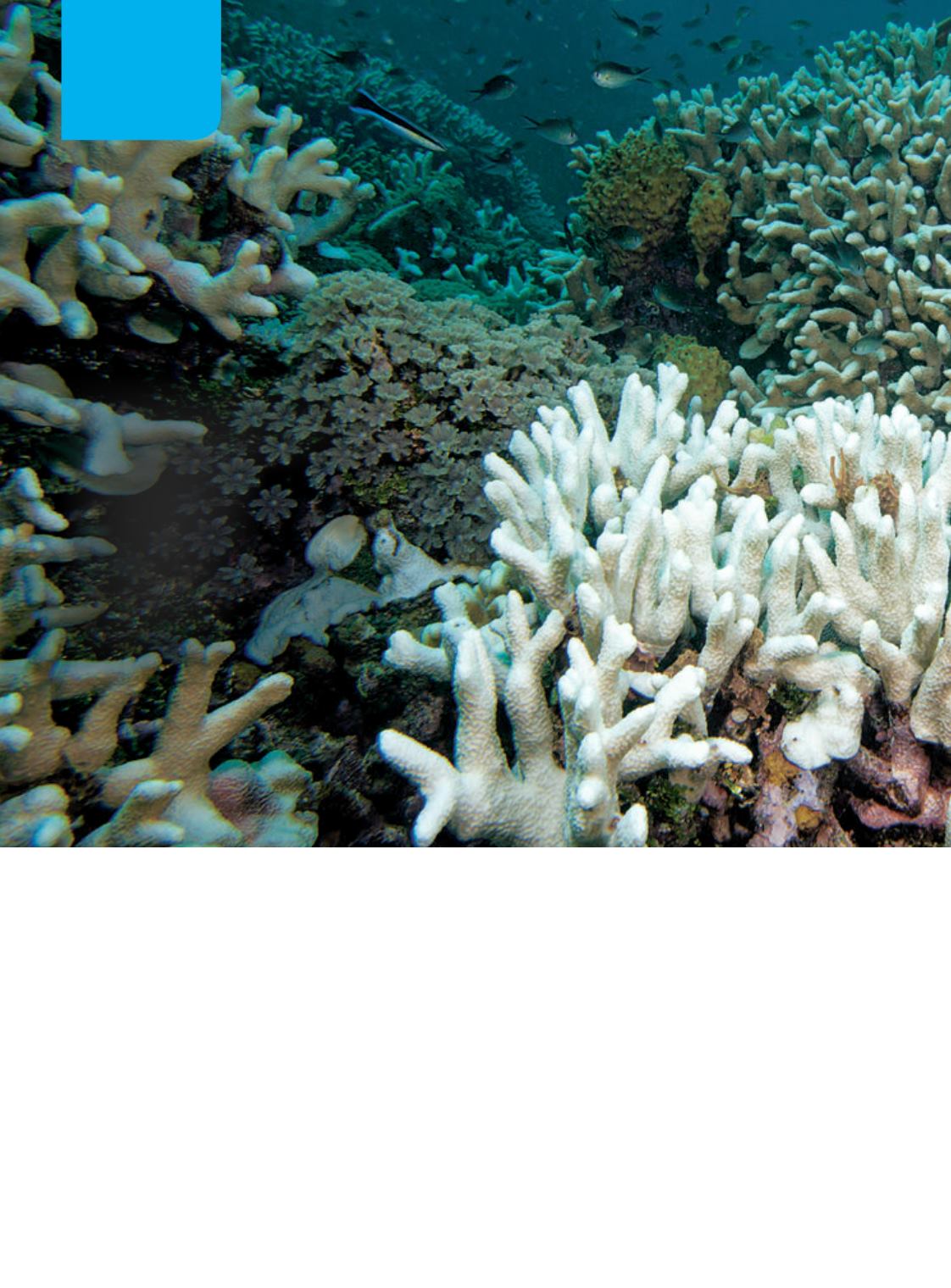

102
|
WINTER 2017
WATER
PLANET
T
he reports of its death are greatly
exaggerated. Throughout 2016,
news articles, including a widely
read satirical obituary in
Outside
magazine, reported on the demise of
the Great Barrier Reef (GBR). But
the reef is not dead. Although in 2016 it suffered the
most extensive mass bleaching event in its history, it
remains one of the natural wonders of the world. If you
head to Cairns or Townsville, Australia, and jump on
a dive boat, you may not even notice any effects of this
recent bleaching.
Like reefs around the world, the GBR is subject to a
number of stressors, one of the most dominant being
global climate change. If we use the recent bleaching
and mortality events on the GBR as a wake-up call
rather than grieving the loss of something that still
exists, the reef ecosystem can repair itself. To remain
optimistic, it is important to understand the difference
between coral bleaching and coral mortality.
Throughout the GBR bleaching event, scientists
from the Australian Research Council (ARC) Centre
of Excellence for Coral Reef Studies (Coral CoE) at
James Cook University, the Great Barrier Reef Marine
Park Authority (GBRMPA), the Australian Institute of
Marine Science (AIMS) and other partners performed
aerial and extensive underwater surveys on reefs
stretching the GBR’s entirety. Surveys were conducted
in March and April 2016 when bleaching was at
its worst (March and April are among the months
with the highest ocean temperatures in the southern
hemisphere) and again on the same reefs in October
DIFFERENTIATING
CORAL BLEACHING
AND CORAL
MORTALITY
By Sarah Egner
A CASE STUDY FROM THE
GREAT BARRIER REEF


















